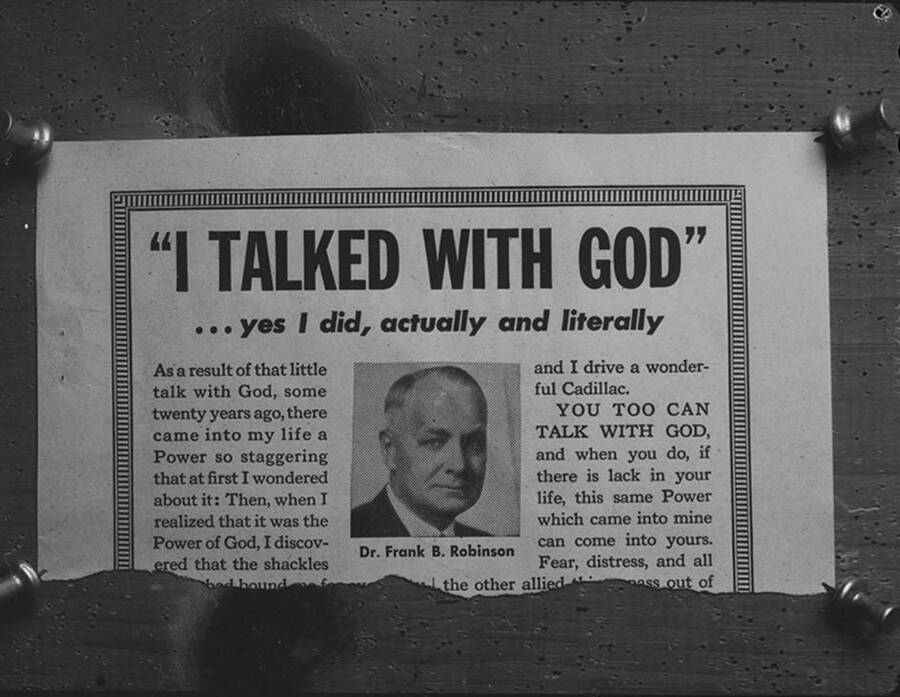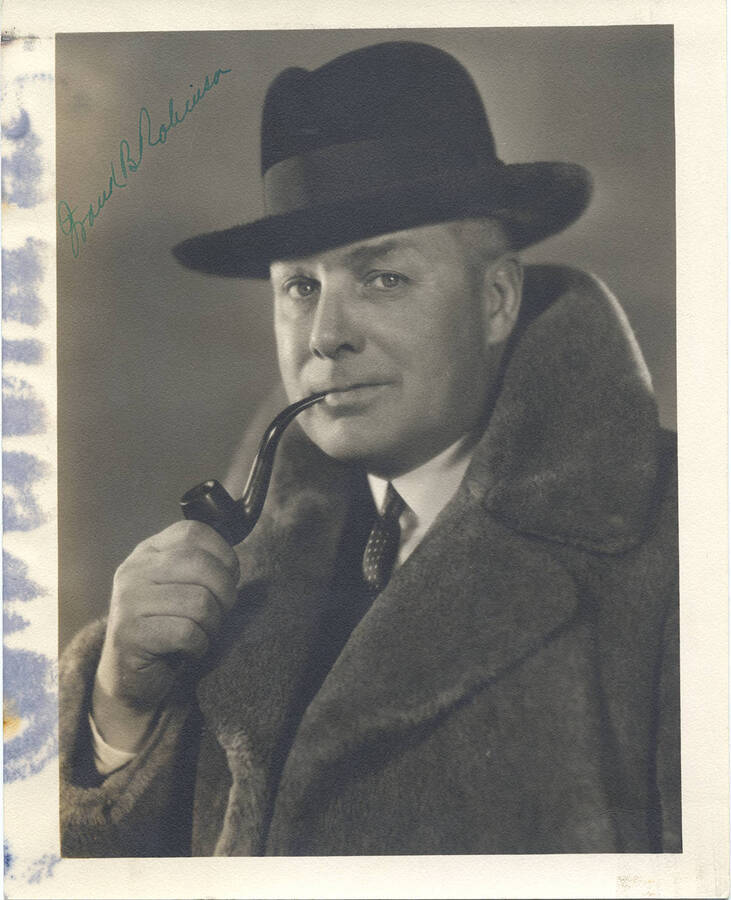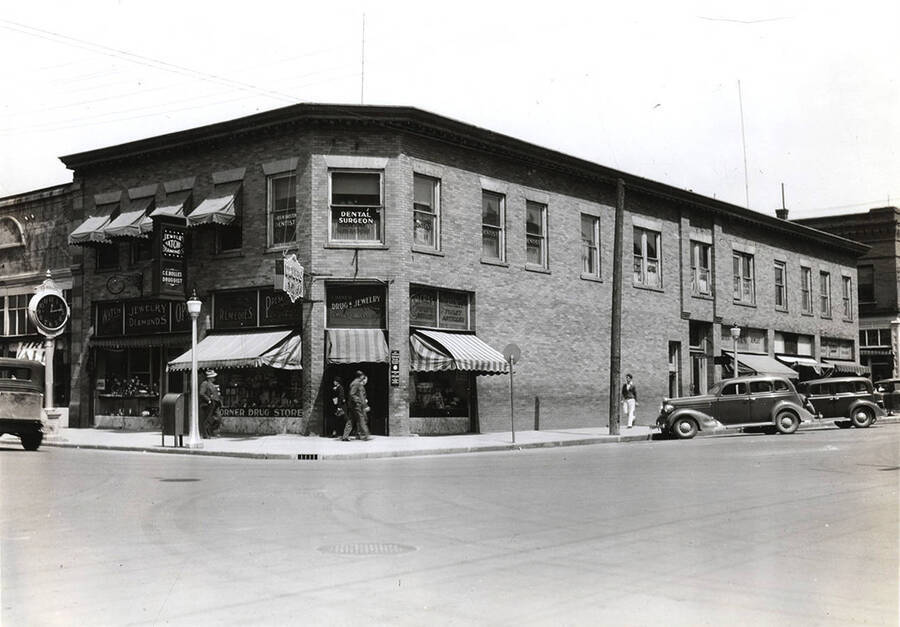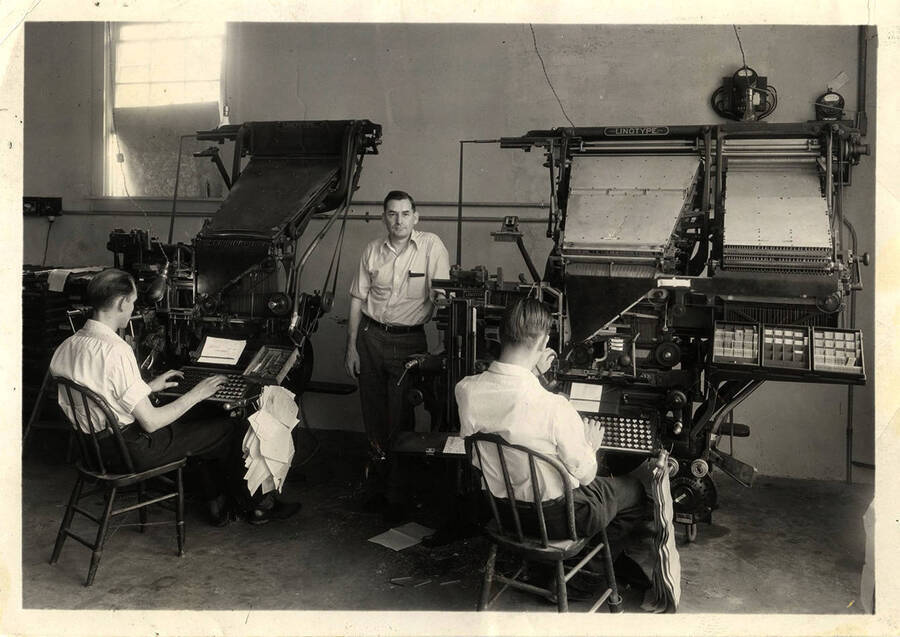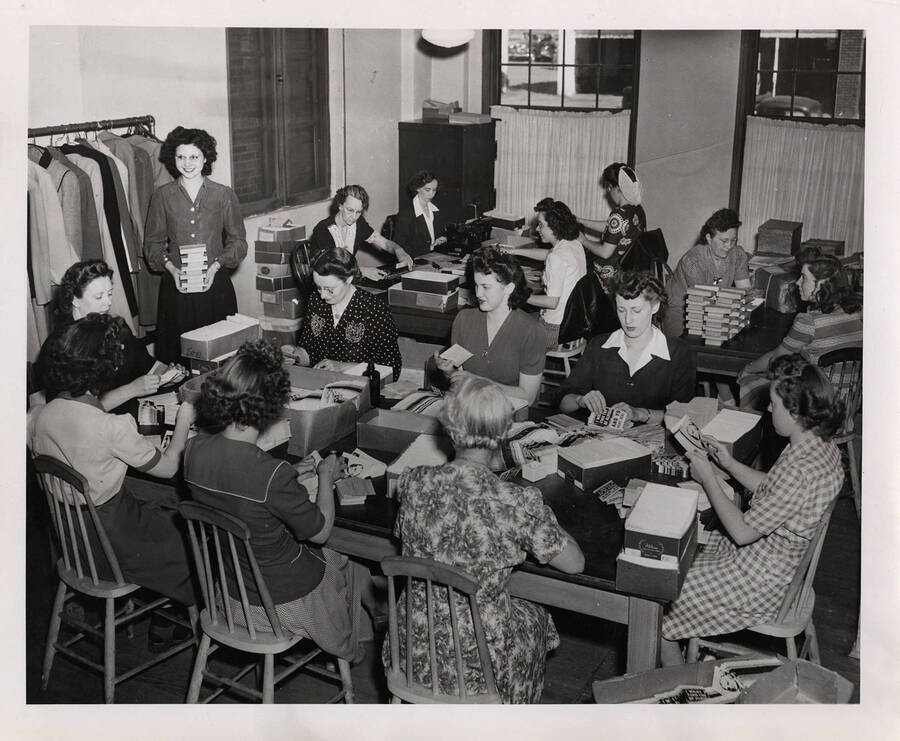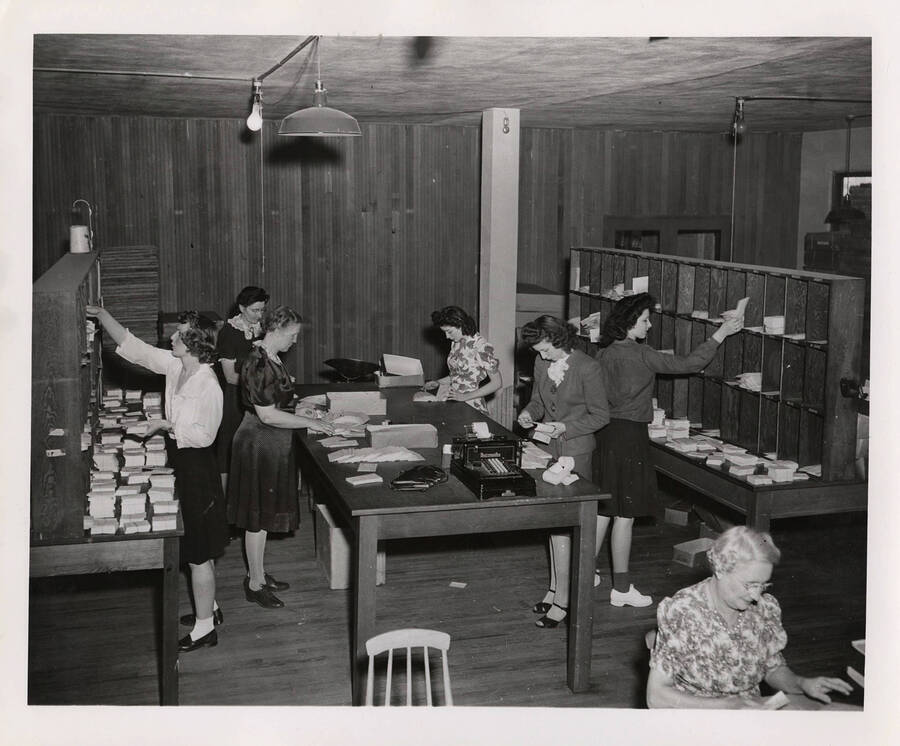Contents: A Brief History of Psychiana | About the Collection | Tech
A Brief History of Psychiana
This history is adapted from the extensive finding aid to the “Frank Bruce Robinson Papers, 1929-1951,” which was first prepared in 1980 by Judith Nielsen. Physical items in this collection are held by Special Collections & Archives
A Vision of Psychiana
While living in Portland, Oregon in the mid 1920s, Frank Robinson had a “vision of the future,” seeing himself at the head of a new religion, one based on I Corinthians 3:16: “Know ye not that your bodies are the temples of God - and that the Spirit of God liveth in you?”
Following this experience, Robinson moved to Yakima, Washington where he worked at the Pioneer Drug Store for about two years, but found that the late hours left him little time to develop his teaching. Seeking a location where drug stores closed at 6:00 p.m., he and his family moved to Moscow, Idaho, in April 1928.
It was not long before he began giving evening lectures in the dining room of the Moscow Hotel on the power of the spirit of God; about sixty people attended his first lecture.
The Religion and the Ad Campaign Begins
While working at the Corner Drug Store, Robinson continually jotted notes to himself, and on a Saturday night he locked his door, sat at his typewriter, and in the next thirty-six hours typed the first set of ten lessons for his unnamed religion. Borrowing about $2500.00 from several towns people, Robinson had the lessons printed and commenced advertising.
More Information
- Northwest Public Broadcasting Documentary
- A half hour documentary on Psychiana, produced in 2019.
- Latah County Historical Society Online Exhibit
- Excellent contextual information with more photographs
According to the Psychiana Bulletin for April 1950, “Psychiana was chartered in the late fall of 1929 and the first Psychiana advertisement was placed shortly after the turn of the year.” Before long, the advertisements for this new religion appeared in 700 newspaper, 86 magazines, and over 18 radio stations. Anyone answering one of these advertisements received approximately 67 pieces of literature over a 22 week span.
Arriving at a Name
In his Strange Autobiography (page 207), Dr. Robinson explained how he arrived at a name for his teaching. In a dream, he entered “a room about twelve feet square painted black and in the middle of it was a Helen Gould canvas army cot. On the cot was a male corpse with hands folded across his breasts. Standing over the head of the corpse and making downward motions with his hands was a man I had never seen before.” After watching this procedure for a time, Dr. Robinson asked the man what he was doing and received the reply: “You ought to know. This is Psychiana, the Power which will bring new life to a spiritually dead world.”
Several months after this dream, as Dr. Robinson was passing a clerk’s desk, he happened to notice a photograph of a student on the desk - a photograph of the same man he had seen in the dream. He learned that this man was Geoffrey Peel Birley, of Alexandria, Egypt, and immediately wrote him asking for $40,000, a sum which Mr. Birley sent within three weeks. Robinson visited Birley in 1934 and, in November 1936, Geoffrey Birley spent several days in Moscow visiting the Robinsons.1
Massive Growth
Early in the development of Psychiana, Frank and Pearl Robinson would spend evenings attending to the assembling and mailing of lessons, but as the enrollment increased - within a year the teachings were being sent to 600,000 students in 67 countries - Robinson had to quit his job at the drug store and hire an office staff to deal with the volume of mail.
The operations began in a single room of the Uquhart Building, next to the Corner Drug Store, then expanded to three additional rooms in the same building. Soon, a five-year lease was signed for offices in the Bratton Building on East Third Street, but in six months, this was too inadequate. In 1932, Robinson bought a quarter block on Third and Jackson Streets, which was originally occupied by Short’s undertaking parlor.
This building was occupied for two years and was later torn down to make room for the Robinson Professional Building. It was not long before it became necessary to split the Psychiana operations - the printing and bookkeeping division occupied a building on First and Main and the mailing operation, or International Headquarters, was housed near the new Professional Building.
At its peak, Psychiana was reported to be the seventh largest religious organization; it employed nearly one hundred people, mostly women, and handled up to 50,000 pieces of mail per day. In 1950, a large multi-story building was being planned, but it was never built.
Psychiana’s Local and National Impact
Early Printing
Most of Robinson’s early printing had been done by George Lamphere, owner of Moscow’s newspaper, the Star-Mirror. In 1933, Robinson discovered he was being greatly over-charged, so he purchased the Elk River paper owned by William Marineau and moved the printing plant and Mr. Marineau to Moscow.
Marineau began doing his own printing and eventually started a second paper, the News-Review, which eventually merged with the Star-Mirror to form the Daily Idahonian.
National Radio
In addition to the lessons, Dr. Robinson also developed a series of radio programs which were broadcast nationwide in the mid-1930s. He attracted large crowds whenever he lectured and was also invited to speak to religion classes at several college campuses, most notably to Dr. Marcus Bach’s classes at the University of Iowa.
Robinson's Assistants
Charles Wesley Tenney
By 1936, Robinson was no longer able to handle all the correspondence and give lectures, so he hired Charles Wesley Tenney, a retired Methodist minister associated with the Idaho Institute of Religion Studies on the University of Idaho Campus. Tenney answered almost all of the student mail until he was forced by the Methodist church to sever his relations with Psychiana. He went to Portland where he worked as a hospital orderly.
William Walter DeBolt
Tenney’s place as Robinson’s assistant was taken by William Walter DeBolt, who, soon after his work with Psychiana began, was expelled by the Church of God. He left Psychiana after several years to become pastor of the Methodist church in Lind, Oregon.
The Death of Frank Robinson
When Frank Robinson died on October 19, 1948, his son, Alfred, who had assisted his father since 1947, attempted to continue operations. However, after several years, he was forced to close, citing the rapid rise in postal rates as the main reason. The last mailings were sent out in 1952, and in January 1953, all operations ceased. The sorting of the remaining lessons and other material took several years.
About the Collection
By 1955, the University of Idaho Library was fortunate enough to have obtained copies of the lessons and books authored by Dr. Robinson. In August 1955, Robinson’s widow and son delivered four sealed boxes to the library, which were to remain sealed for 25 years. After 25 years, these boxes were opened; the contents, along with a brief biographical history of Dr. Frank Robinson, are described in our finding aid.
Included in the three boxes of correspondence are letters between Psychiana headquarters and students in eighteen countries. Carbon copies of Psychiana’s replies are attached to most of the original letters from students. The letters from students which Robinson used in his publications are marked with quotation marks; occasionally words were changed or sentences rearranged.
The remaining boxes contain copies of all the Psychiana lessons, copies of Psychiana Weekly and other similar publications, typescripts of speeches and articles by Frank Robinson, broadsides used in advertising, newspaper clippings, magazine articles, a scrapbook of clippings kept by Robinson, and photographs.
This is a very important collection not only for those researching Dr. Frank B. Robinson and the impact of Psychiana, but also for those interested in non-orthodox religion. Anyone interested in the history of effective advertising methods would also find this collection useful.
For a detailed inventory of the contents of this collection, along with a brief biographical history of Dr. Frank Robinson based on the contents of collection, please see our finding aid.
-
News-Review (Moscow, Idaho), November 2, 1936. ↩
Technical Credits - CollectionBuilder
This digital collection is built with CollectionBuilder, an open source framework for creating digital collection and exhibit websites that is developed by faculty librarians at the University of Idaho Library following the Lib-Static methodology.
Using the CollectionBuilder-CSV template and the static website generator Jekyll, this project creates an engaging interface to explore driven by metadata.

